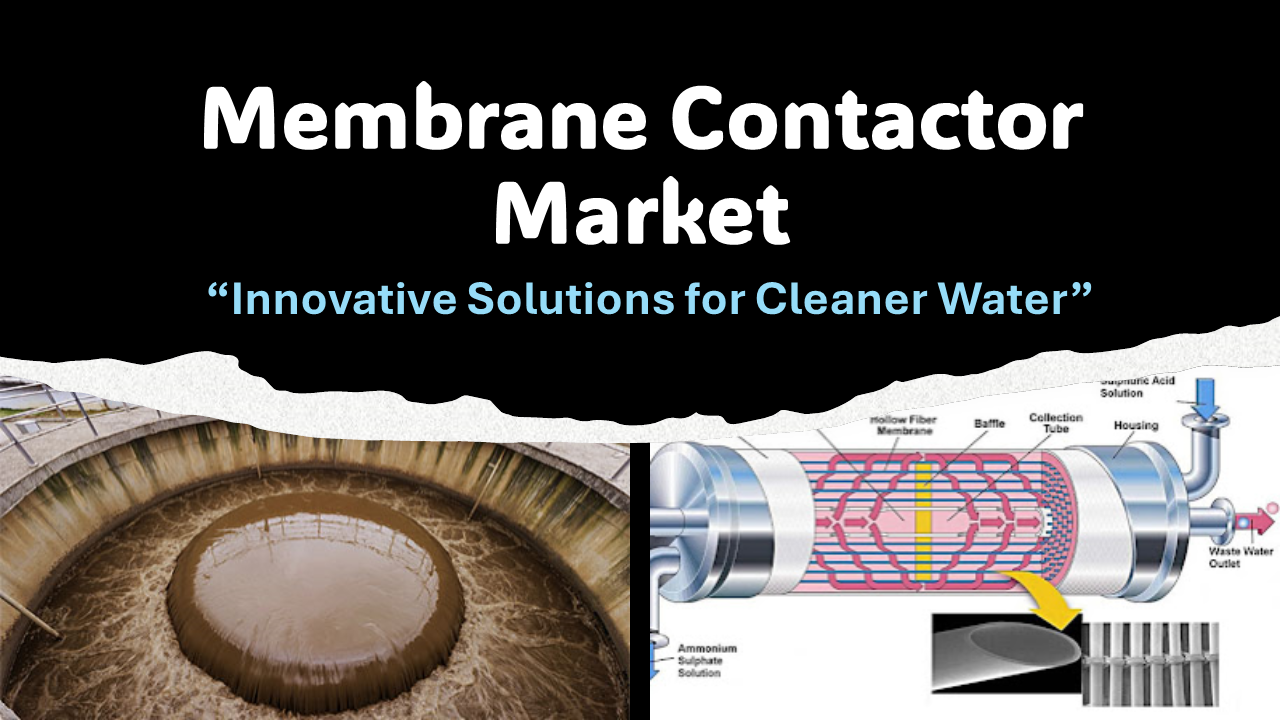A membrane contactor is a specialized device used in various industries, including wastewater treatment, food and beverage production, pharmaceuticals, and more. Its primary function is to facilitate the transfer of substances between two phases, typically between a gas and a liquid, while keeping them physically separated by a semi-permeable membrane. The Membrane Contactor Market is projected to reach USD 394 million by 2028, at a CAGR of 6.3% from 2023 to 2028.
Download PDF Brochure @ https://globalmarketvision.com/sample_request/314931
Membrane contactors offer a significant interfacial area between two phases, enabling effective mass transfer of gases, volatile substances, or solutes. The membrane’s selective permeability allows for the targeted separation or transfer of particular components, improving process effectiveness and product quality.
Driver: Increasing adoption in water and wastewater treatment
Membrane contactors have substantial prospects in water and wastewater treatment applications as the need for clean water rises. Membrane contactors are in high demand in municipal and industrial water treatment facilities due to the necessity for the efficient removal of pollutants such dissolved gases, organic compounds, and heavy metals. The need for effective water treatment technology is increasing as the world's water resources become more limited and the demand for clean water increases. With the use of membrane contactors, pollutants can be removed from water and high-quality water can be produced for a variety of uses, including drinking water, industrial processes, and agricultural irrigation.
By membrane type, the others segment accounted for the second largest market share in 2022.
The other membrane types include perfluroalkoxy (PFA), polyvinylidene fluoride (PVDF), polymethylpentene (PMP), and composites. PFA membranes are adept at handling corrosive fluids and offer efficient mass transfer. Another fluoropolymer noted for its superior mechanical strength and chemical resistance is PVDF. PMP membranes are useful for a variety of applications due to their high gas permeability and low fouling tendencies. The use of other membrane types in the production of membrane contactors for the above-mentioned characteristics will fuel growth of this segment.
By application, the food processing segment is estimated to grow at the highest rate during 2023 to 2028.
The food processing segment, by applications, is projected to grow at the highest CAGR, owing to its usage in deaeration and degassing of liquid food products. Membrane contactors remove dissolved gases such as oxygen or carbon dioxide to enhance the quality, flavor, and stability of beverages, juices, wines, or sauces. They provide effective gas-liquid separation, which reduces foaming, extends the shelf life of the product, and improves taste. Membrane contactors are used in the food processing industry because they improve product quality, shelf life, flavor retention, and process effectiveness.
Asia Pacific was the largest region in the membrane contactor market in 2022.
The Asia Pacific region has been investing resources in R&D projects to create cutting-edge membrane technology and enhance current membrane contactor procedures. Collaborations between academic institutions, research organizations, and business stakeholders are improving membrane performance, creating new materials, and enhancing system design for particular applications. The need for membrane contactors in the area is being driven by such developments. Also, sustainability and environmentally friendly practices are being emphasized more and more by governments and businesses in Asia Pacific, fueling the growth of membrane contactor market.
Major players operating in the membrane contactor market include:
- 3M (US), Romfil (Germany)
- VASONGROUP – Enologica Vason e JU.CLA.S. (Italy)
- KH TEC GmbH(Germany)
- Careers at Hangzhou Cobetter Filtration Group (China)
- PTI Pacific Pty. Ltd. (Australia)
- Eurowater AB (Denmark)
- Hydro-Elektrik GmbH (Germany)
- Compact Industries (US)
- Veolia Water Technologies (France)
- Wuhan Tanal Industrial Co., Ltd. (China)
Recent Developments:
- In May 2023, 3M announced to invest about USD 150 million to boost its capacity to expand biotech manufacturing, a rapidly growing segment of the medical industry that is offering ground-breaking treatments to patients. With the help of the new investment, 3M will be able to produce and deliver crucial filtration equipment rapidly for bioprocessing, biological, and small molecule pharmaceutical manufacturing applications.
- In April 2020, EUROWATER collaborated with three research institutions, two water utilities, and one water technology company for the MEM2BIO project, which combines two technologies, namely, membrane filtration and biofiltration, to purify and offer drinking water in Denmark. This collaboration is expected to enhance the market for the company’s membrane degassing units.
- In July 2019, Hangzhou Cobetter Filtration Equipment Co., Ltd. (Cobetter Filtration) entered a partnership with Banner Industries (US). Under this partnership, Banner Industries will distribute products manufactured by Cobetter Filtration in the US market. This partnership is in line with Cobetter Filtration’s expansion strategy into the US market.
